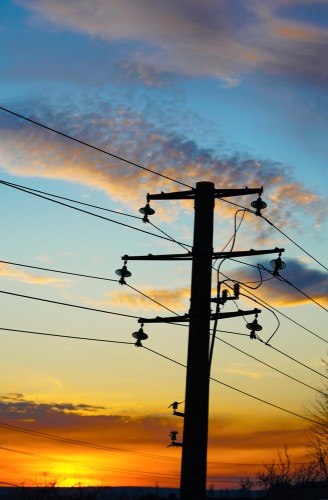Hawaiian Electric files five-year action plan to harden grids against climate change effects

Severe weather is one of the major effects of climate change, and Hawaiian Electric last week announced a five-year, $190 million investment plan to harden its island grids against those dangers.
Oahu, Hawaii Island, Maui, Molokai, and Lanai would all see their share of updates under the proposed Climate Adaptation Transmission and Distribution (T&D) Resilience Program, as filed with the Public Utilities Commission (PUC). This would take place in phases and would involve a cost recovery mechanism based on Hawaiian Electric’s customers.
“Reliable electric grids are a critical driver of Hawaii’s economic activity and prosperity,” Colton Ching, senior vice president of planning and technology at Hawaiian Electric, said. “There’s an urgent need to enhance our power systems to guard against extreme weather events that are increasing in both frequency and intensity due to climate change. While there is a cost to preparing for more adverse effects of climate change, the cost of inaction is much higher.”
The company estimated that the average monthly bill would increase by about $0.33 on Oahu, $0.86 on Hawaii Island, and $0.71 in Maui County for a residential customer using 500 kW hours. For less than an additional $1 per month on customers, Hawaiian Electric believes it could make significant progress on updating its 9,400 miles of transmission and distribution lines when coupled with potential federal funding opportunities to offset costs.
Some specific investment approaches would include: strengthening critical transmission lines against extreme winds, reinforcing distribution lines that provide for critical community lifelines such as hospitals and wastewater facilities, hardening certain utility poles, improving vegetation management and tree trimming, stronger lines, and new technology for wildfire response, and installing equipment to substations potentially vulnerable to floods.
Things would differ from island to island, though. On Hawaii, for example, the company would specifically strengthen one of the four cross-island ties to guarantee renewable generation on any one side would be able to support the whole. On Oahu, it will begin undergrounding select single-phase neighborhood overhead lines, while on Maui, distribution feeder ties would be installed at isolated substations currently operating without backup.
Hawaiian Electric also intends to increasingly expand the use of microgrids and distributed energy resources such as rooftop solar and battery systems.
